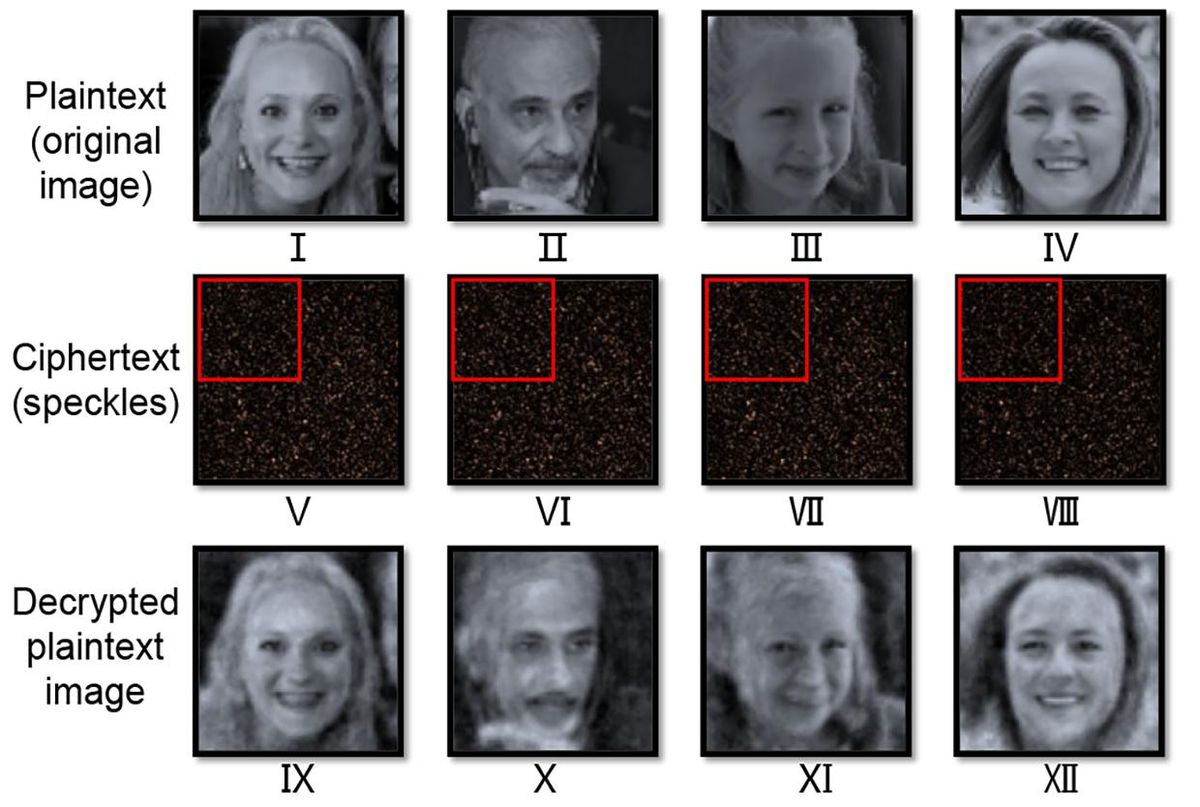Ground-up pieces of glass could help enable a simple yet incredibly secure way to encrypt facial images, a new study finds.
For better or worse, facial-recognition technology has now become commonplace. Its ubiquity is leading to increasing concerns about the privacy of facial images.
Software-based cryptography systems are widely used nowadays to encrypt facial images. These depend on a sender and receiver sharing a secret key that decrypts a message's contents. These keys are typically strings of tens to hundreds of bits. Usually, the longer the key, the greater the security one has, but more computing power is needed.
However, in theory, quantum computers of great enough power are capable of cracking modern software cryptosystems, given their usual key lengths. As such, researchers are exploring numerous alternatives to modern cryptosystems.
Among hardware-based cryptosystems, optical technologies have raised interest due to ongoing developments in optical computing and computational imaging. These generally use diffracted light to convert data into encrypted messages, and promise enormously long keys as well as high speeds and the need for low computational power. However, many reported optical techniques have proven too complex to integrate easily with other systems.
Now scientists in China, Hong Kong, and Singapore have developed a simple yet highly secure optical cryptosystem for facial images using ground glass. "The proposed system is fast, low-cost, and easy to integrate with other systems," says study co-senior author Puxiang Lai, an optical scientist at Hong Kong Polytechnic University.
The new system transmits facial-image data through ground-up pieces of glass, resulting in speckles possessing seemingly randomly scattered patches of light and dark that are then captured by a camera as a secret message. The scrambling process is equivalent to keys 17.2 billion bits long, which is enormous even for a quantum computer to attack, the researchers say.
The scientists came up with the idea after working on biological imaging for about 12 years, which often involved overcoming speckles. This led them to wonder "if such highly complicated speckle patterns can be utilized," Lai says.
To decrypt these secret messages, the scientists trained a neural network on how a set of 19,800 facial images should look and how they looked after they were sent through a given set of ground glass. In preliminary experiments, they found the neural network could decrypt the encrypted images with more than 98 percent accuracy.
Each set of ground glass produces a unique pattern of light and darkness that is virtually impossible to duplicate. Each neural network needs to be trained with a given set of ground glass to decrypt it. In practice, one might envision an image-capturing device fitted with this optical cryptosystem sending encrypted data to a server equipped with a neural-network decryption system. For each sender, the server will need a counterpart neural network.
In the future, this optical cryptosystem might not only find use in encrypted face recognition "but also for other applications, such as encrypted fingerprint recognition," Lai says. The scientists detailed their findings 26 January on the ArXiv preprint server.
- Facing Up to Facial Recognition - IEEE Spectrum ›
- Army Trains AI to Identify Faces in the Dark - IEEE Spectrum ›
- Automated Facial Recognition: Menace, Farce, or Both? - IEEE ... ›
- Facial Recognition Faces More Proposed Bans Across U.S. - IEEE ... ›
- Facebook's Face Recognition Tech Goes on Trial - IEEE Spectrum ›
- Racial Profiling Goes High Tech With Facial Recognition - IEEE ... ›
- How Facial Recognition Technology Is Helping Identify the U.S. ... ›
Charles Q. Choi is a science reporter who contributes regularly to IEEE Spectrum. He has written for Scientific American, The New York Times, Wired, and Science, among others.



